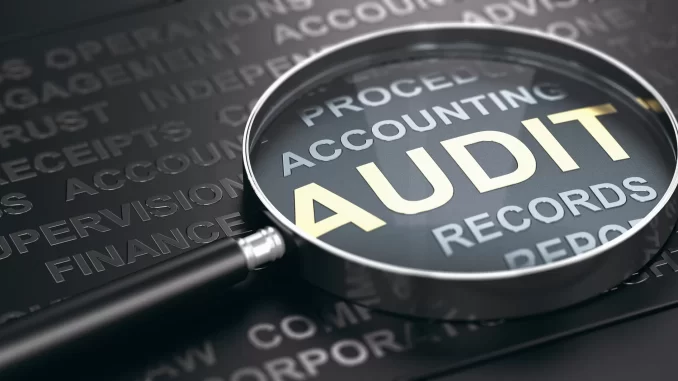
By Hank Russell
A local school district was cited for not properly recording and accounting for capital assets valued at more than $181 million. As a result, the district had a greater chance of the items in question being lost, stolen or misused, according to an audit from the New York State Comptroller’s Office.
From July 1, 2022 to August 7, 2024, auditors for the comptroller’s office visited the Shoreham-Wading River Central School District. Based on the audit, the district’s assistant superintendent of business and operations, with the assistance of the district’s business manager, supervised and monitored the district’s business operations, which included overseeing the maintenance of the inventory list. As of July 1, 2023, the District’s inventory list of capital assets contained 9,815 assets with an acquired value of $181,700,280, the auditors reported.
A capital asset, as defined by the auditors, is “an asset that has a useful life of more than one year. It can include everything from furniture, computer equipment, vehicles and machinery to buildings and land. Consequently, they represent a significant investment of school district (district) resources.
According to the audit, the district’s Board of Education did not designate a property control manager. Therefore, the district did not have a specific person who was responsible for tracking capital assets and ensuring that capital asset information was complete, up-to-date, accurate and useful. In addition, district officials did not properly segregate asset inventory duties among employees, and officials did not monitor the work of those who performed these duties.
For example, the comptroller’s office reviewed 30 purchases made during the audit period, which included 96 purchased assets, and determined that 78 assets with a combined acquisition value of $419,538 (87 percent) were not included in the district’s inventory list.
In addition, auditors selected 50 assets with a combined approximate acquisition value of $233,9451 to locate them to confirm that they were in the district’s possession and properly tagged.
While all assets were located, 15 assets with a combined acquisition value of $29,770 had incorrect or “unknown” locations listed in the inventory list, had inaccurate asset descriptions, or had multiple asset tags, according to the audit. Furthermore, of the 276 assets recorded in the District’s inventory list as having been disposed of, 269 assets with a combined acquisition value of $830,595 had been disposed of without proper Board approval, disposal information that was not recorded in a timely manner, or were inaccurately recorded as disposed in the District’s inventory list.
The auditors learned that the district used a third-party vendor to manage its inventory list. The vendor provided district officials with a software template, which they then used to record inventory changes throughout the year. At the end of each year, officials sent the template with their information back to the vendor, and the vendor updated the district’s inventory list
The district’s inventory list as of June 30, 2023, which listed 7,2482 capital assets with an approximate acquisition value of $8,255,747, did not have serial numbers, manufacturer names, model numbers, and/or accurate acquisition values for 3,159 assets with an approximate acquisition value of $4,807,437. According to the audit:
- 2,463 assets with an approximate acquisition value of $3,983,555 did not have a serial number.
- 2,031 assets with an approximate acquisition value of $2,844,552 did not have a manufacturer’s name.
- 1,796 assets with an approximate acquisition value of $2,476,511 did not have a model number of the asset.
- 982 assets each had an acquisition value listed as $1.
Some of the items, the audit stated, were disposed of by district officials without the Board of Ediucation’s approval. The audit also found that district officials did not perform a comprehensive annual inventory of the capital assets.
The comptroller’s office made the following recommendations:
- Designate a property control manager who is responsible for maintaining an up-to-date inventory of capital assets.
- Separate inventory control duties among different employees or establish compensating controls over the work performed by employees who are responsible for tagging and recording capital assets and maintaining custody of the assets.
- Ensure that employees maintain accurate and up-to-date capital asset inventory lists that contain the necessary details needed to track and locate capital assets. These lists should include the make, model and serial number and accurate location and tag number for all assets.
- Ensure that the Board authorizes all asset disposals before the assets are disposed of and are marked as disposed in the district’s inventory list.
- Review updates to the inventory list proposed by the vendor, investigate any discrepancies and ensure that the updates are accurate.
- Perform a more comprehensive annual inventory test of purchased assets and select assets from the inventory list to test as well.
- Compare the IT inventory list to the district’s inventory list on an annual basis to identify any discrepancies.
- Have the IT department include more detailed information, such as acquisition dates and cost, in their inventory list.
In response, School Superintendent Gerard W. Poole wrote in his letter to the comptroller’s office and that he agrees with the recommendations.
“The Distruct has begun addressing the audit findings and is committed to addressing the recommendations outlined in your report to strengthen our capital asset management practices,” Poole wrote. “The District has already completed a full asset inventory and revised our practices for managing obsolete items. The District will submit a comprehensive Corrective Action Plan within the required 90-day timeframe as mandated.”

